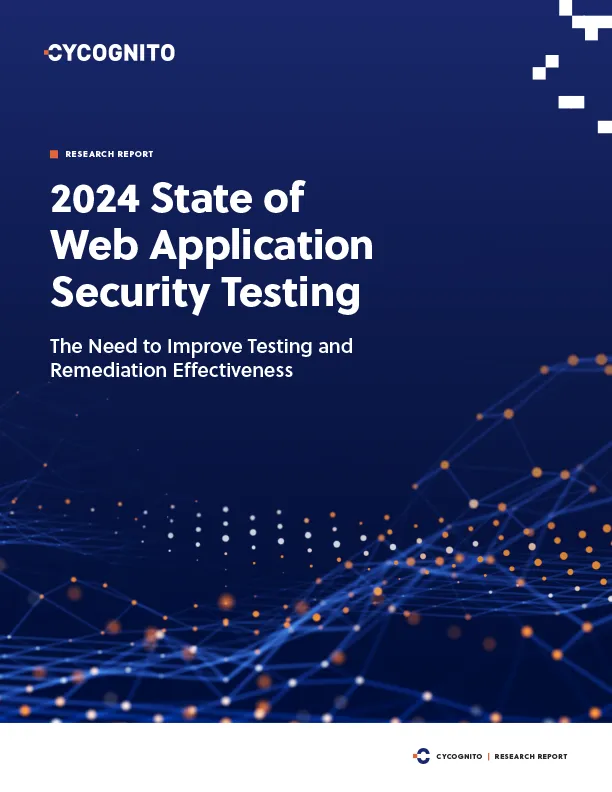What Is API Discovery?
API discovery is the process of identifying and cataloging application programming interfaces (APIs) within a digital ecosystem. This involves recognizing documented and undocumented APIs to understand the full scope of interactions possible within and across systems.
Discovering APIs is critical for effectively managing API architectures, offering visibility into the APIs that operate within a network. It helps organizations understand the APIs they have deployed, how these APIs are used, and the data they access. This is important for security, governance, and operational efficiency.
By systematically identifying APIs, organizations can better analyze and secure their digital assets, ensuring that APIs function as intended and do not expose sensitive information or services unnecessarily.
This is part of a series of articles about API security.
Why You Need API Discovery: Types of Unknown APIs
Having a clear picture of an organization’s API’s is crucial for identifying hidden, outdated, or vulnerable APIs that need to be fixed or removed.
Shadow APIs
Shadow APIs are undocumented or hidden APIs that were created and deployed without formal approval or oversight from IT or security teams. These APIs can pose significant security risks since they are not subject to the organization’s security policies or audits. Shadow APIs can become entry points for attackers due to their lack of visibility and security controls.
Zombie APIs
Zombie APIs are outdated or deprecated APIs that remain active within a system but are no longer updated or supported. These APIs can pose security risks due to their vulnerabilities that are not being patched or managed. Zombie APIs can also contribute to system clutter, reducing efficiency and visibility for developers and security teams.
Rogue APIs
Rogue APIs are unauthorized APIs that are created with malicious or undesirable intent. These APIs may be introduced by insiders seeking to bypass restrictions or by attackers looking to infiltrate systems. Rogue APIs might represent a substantial security threat, depending on the capabilities and motives of the threat actor.
Unknown Legitimate APIs
Unknown legitimate APIs refer to officially sanctioned APIs that, for various reasons, are not properly documented or cataloged within an organization’s API management systems. These APIs, while created following standard development practices and with proper authorization, may lack visibility due to oversight, rapid development cycles, or shifts in project management.
API Discovery Use Cases
API discovery is useful for several purposes:
Service Identification
API discovery enables organizations to map out their digital services and the APIs that connect them. This process provides a comprehensive view of the services offered, how they interact, and the dependencies between them. Understanding these relationships is critical for optimizing systems and preparing for integration or migrations.
Identifying services aids in architecture planning and management. By accurately identifying and cataloging APIs, organizations can streamline development processes, avoid redundancy, and ensure compatibility between systems.
API Documentation
API documentation is a critical component of API management, and API discovery assists in maintaining up-to-date and comprehensive documentation. By automatically identifying APIs and their characteristics, organizations can ensure that developers have access to current information, enabling easier integration and use of APIs.
Accurate API documentation through discovery processes also supports security and compliance efforts. Documentation provides information on APIs’ purposes, data handling, and security measures, essential for internal audits and adhering to regulatory requirements.
Integration and Interoperability
API discovery enhances integration and interoperability among systems by identifying available APIs and how they can interact. This aids in the design of integrations that leverage existing APIs for new functionalities or improved data sharing. Understanding API capabilities and limitations is crucial for system integration projects.
API discovery supports interoperability by identifying potential compatibility issues and opportunities for standardization across APIs. This creates a more cohesive digital ecosystem for scalable, efficient operations.
Tips from the Expert

Dima Potekhin, CTO and Co-Founder of CyCognito, is an expert in mass-scale data analysis and security. He is an autodidact who has been coding since the age of nine and holds four patents that include processes for large content delivery networks (CDNs) and internet-scale infrastructure.
In my experience, here are tips that can help you better manage and enhance API discovery:
- Utilize endpoint detection and response (EDR) for API monitoring: EDR tools can be adapted to monitor API endpoints specifically, enabling rapid detection of unauthorized or suspicious API activities. This provides an additional layer of security for identifying shadow or rogue APIs.
- Perform regular attack surface mapping: Conduct frequent attack surface mapping exercises that include APIs as part of the broader digital ecosystem. This ensures that all APIs, including hidden or undocumented ones, are accounted for and appropriately secured.
- Enhance API visibility with service mesh: Implement a service mesh architecture that offers fine-grained visibility into API interactions across microservices. Service meshes can help discover and secure APIs within complex, distributed systems by providing consistent policies and observability.
- Regularly audit third-party integrations: Conduct periodic audits of third-party integrations to ensure that all associated APIs are documented and conform to your organization’s security policies. This helps identify any shadow or rogue APIs introduced through external partners.
- Educate developers on secure API practices: Provide ongoing training for developers on secure API development practices, emphasizing the risks of undocumented or improperly managed APIs. Well-informed developers are less likely to introduce shadow or rogue APIs inadvertently.
These tips should help in further refining your API discovery processes, providing greater security and visibility within your digital ecosystem.

2024 State of Web Application Security Testing
Are you confident your web application security measures are keeping pace with evolving threats?
Discover how your web app security compares. Learn about average testing frequency, the prevalence of web application security incidents and breaches, and the increasing adoption of automation to improve testing efficiency.

Manual vs. Automatic API Discovery Tools
Manual API discovery involves manually cataloging and documenting APIs, a time-consuming and error-prone process. It relies heavily on developer knowledge and documentation, which may not always be up-to-date or comprehensive. Manual discovery struggles to keep pace with the rapid development and deployment of new APIs, risking gaps in visibility and security.
Automatic API discovery tools streamline the identification and cataloging of APIs using network scanning, crawling, and technologies like pattern recognition. These tools offer real-time visibility into API landscapes, both capturing documented and undocumented APIs. Automating API discovery makes it easier to understand and manage APIs, enhancing security and governance capabilities.
Best Practices for API Discovery
Here are some measures for ensuring an effective API discovery process.
1. Adopt Standard Protocols and Specifications
Standard protocols and specifications like REST, GraphQL, and OpenAPI Specification (OAS) facilitate API discovery and integration. Standards ensure consistency in API design, making it easier for discovery tools to identify and document APIs.
Adopting these standards also enhances interoperability, enabling smoother integration across different systems and technologies. By following well-established protocols, organizations can ensure that their APIs adhere to best practices for security and data management. This uniformity aids in creating a more secure and manageable API ecosystem.
2. Implement Metadata and Tagging
Metadata provides essential information about APIs, such as their purpose, version, and security requirements. Tagging allows for easier categorization and retrieval of APIs based on specific characteristics or functionalities.
Metadata and tagging facilitate the management and utilization of APIs. By enriching APIs with descriptive information, organizations can automate parts of the discovery process, improving accuracy and reducing the effort required to manage API catalogs. These practices also support better governance and security by ensuring APIs are appropriately classified and controlled.
3. Establish API Governance Policies
Governance policies set standards for API development, documentation, and security, ensuring consistency and compliance across all APIs. These policies help manage the lifecycle of APIs, from creation to retirement, and include guidelines for version control, deprecation, and auditing.
API governance supports effective API discovery by maintaining order and standards within the API landscape. It prevents issues like shadow, zombie, and rogue APIs by imposing clear rules and oversight.
4. Utilize API Gateways and Management Tools
API gateways serve as centralized points of control for API traffic, simplifying the monitoring, security, and management of API interactions. Management tools offer features for documenting, cataloging, and analyzing APIs, supporting discovery efforts.
These tools enhance security, ease of use, and performance. Gateways can enforce security policies, rate limiting, and authentication, reducing the risk of unauthorized access and overloading. Management tools provide visibility into API usage and performance, aiding in optimization and ensuring APIs meet functional and security requirements.
5. Improved Communication Between Developers, IT, and Security
Enhanced communication among developers, IT, and security teams is pivotal for a successful API discovery process. Clear and open lines of communication help to bridge the gap between these groups, ensuring that everyone is aware of the APIs being developed, deployed, and decommissioned.
This collaborative approach facilitates the identification of shadow and zombie APIs, while also highlighting unknown legitimate APIs that need to be documented and managed. By fostering a culture of transparency and cooperation, organizations can better align their API strategies with security protocols and governance policies, thereby minimizing risks and maximizing the effectiveness of their digital assets.
API Security with CyCognito
CyCognito is an exposure management platform that reduces risk by discovering, testing and prioritizing security issues. The platform scans billions of websites, cloud applications and APIs and uses advanced AI to identify the most critical risks and guide remediation.
Emerging companies, government agencies and Fortune 500 organizations rely on CyCognito to secure and protect from growing threats.
Want to see how it works?
- Check out our website and explore our platform with a self-guided, interactive dashboard product tour.
- To learn how CyCognito can help you understand your external attack surface and exposed risks, please visit our Contact Us page to schedule a demo.

2024 State of Web Application Security Testing
Are you confident your web application security measures are keeping pace with evolving threats?
Discover how your web app security compares. Learn about average testing frequency, the prevalence of web application security incidents and breaches, and the increasing adoption of automation to improve testing efficiency.













